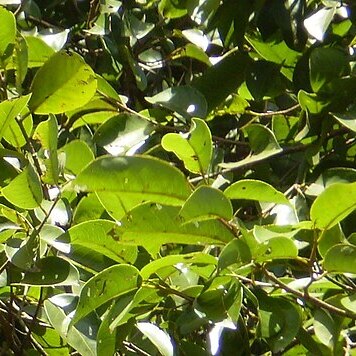Trees, often tall, with ovate-elliptic or elliptic entire usually±coriaceous petiolate leaves; new branchlets covered at nodes with rather large intrapetiolar stipules folded around the terminal bud. Flowers small, scented, in axillary and terminal panicles. Calyx with 4-5 small imbricate lobes.. Petals 4-5, broadly oblong, imbricate, spreading. Stamens 8-10, inserted at the base of the thick elevated cushion-shaped disk. Ovary ovoid, inserted in the depressed apex of the disk, 2-locular; ovules 1 per locule, inserted near the middle; style curved; stigma simple. Drupes large, edible, thick and fibrous, rounded-oblong in outline, compressed, 1-locular and 1-seeded. Pyrenes with±thick wall covered with fibres. Seeds oblong with straight embryo, flat cotyledons and mostly copious endosperm.

